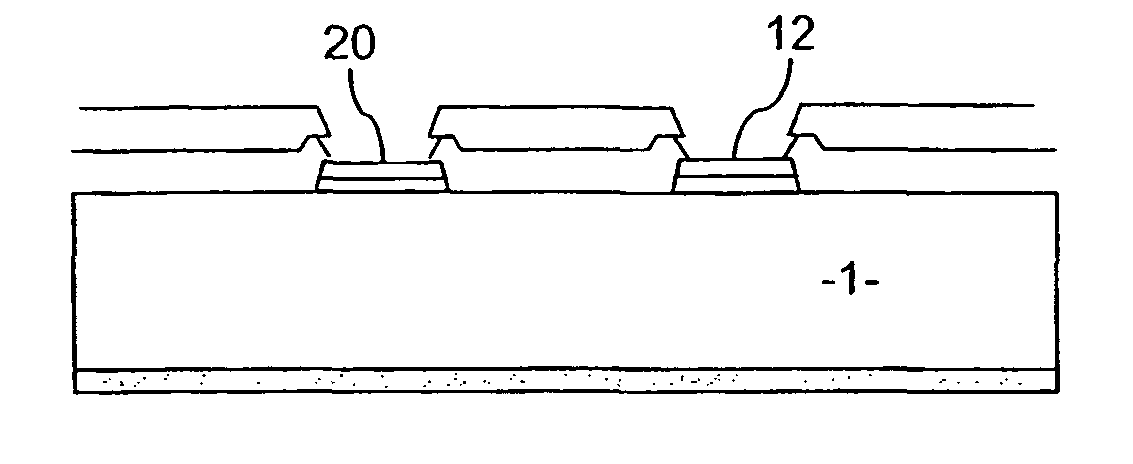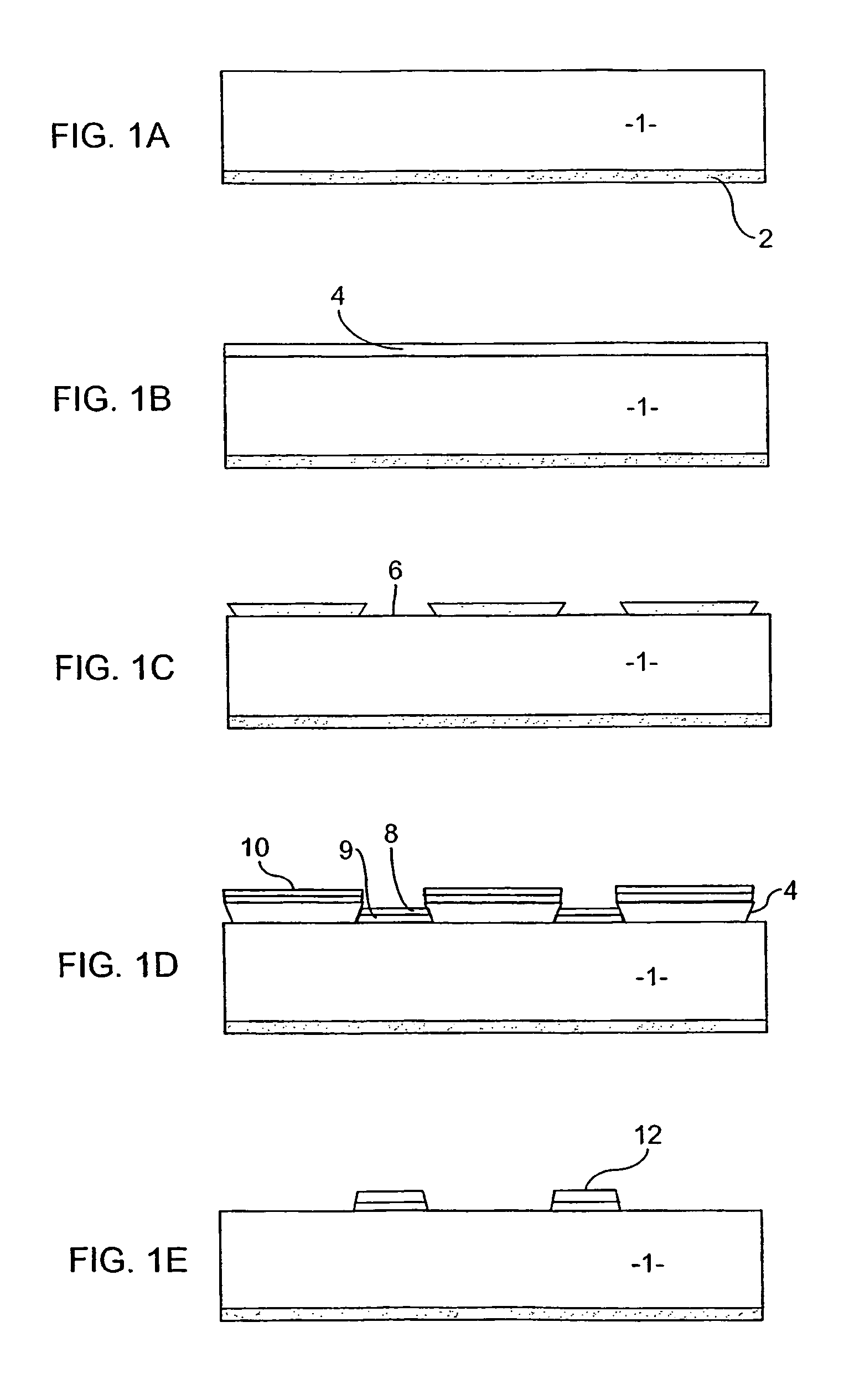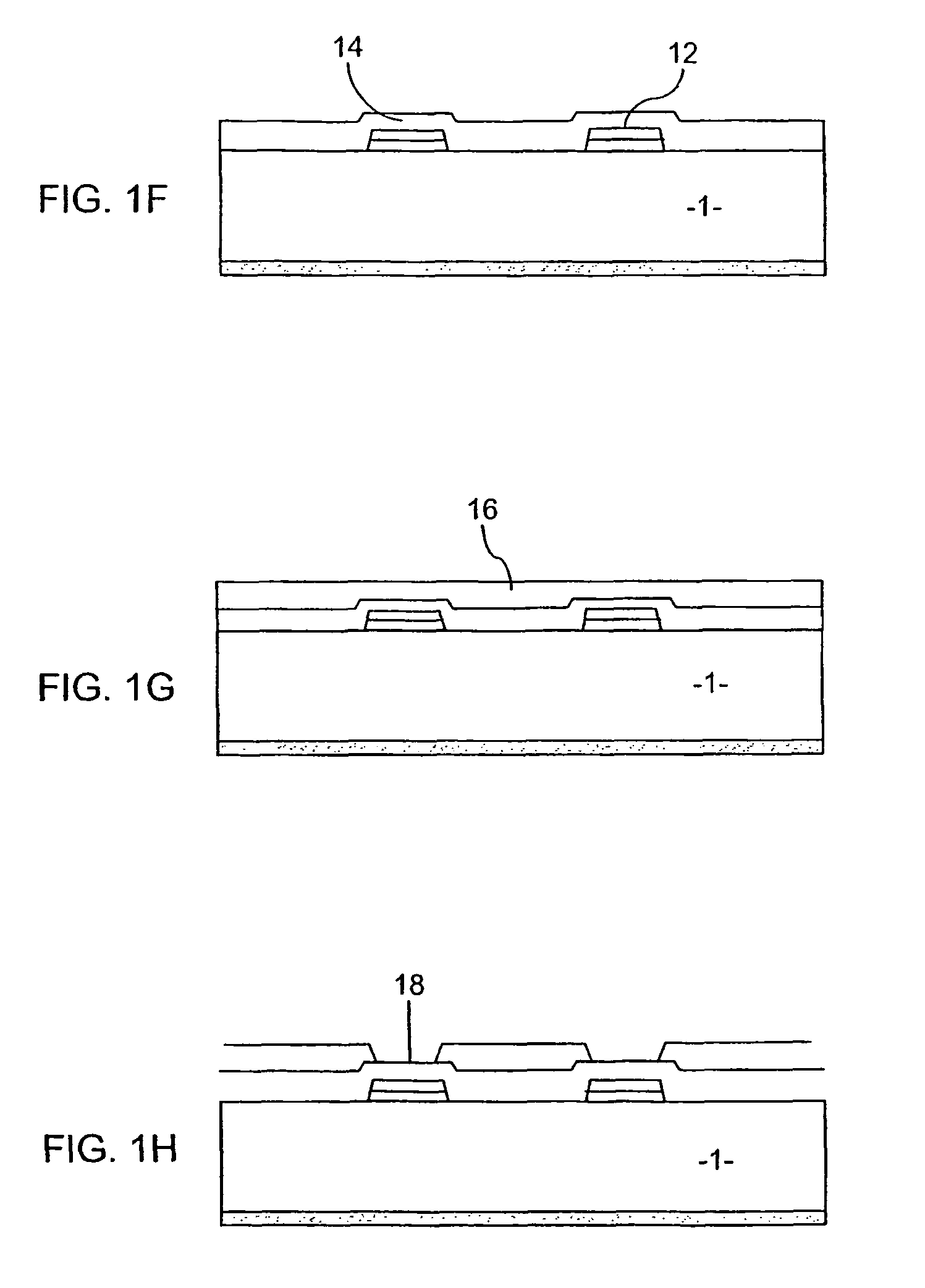Formation of contacts on semiconductor substrates
a technology of semiconductor substrates and contacts, applied in the direction of radioation control devices, television system scanning details, television systems, etc., can solve problems such as certain characteristics of conductive contacts, and achieve the effects of reducing inter-contact resistivity, stable performance, and increasing surface leakage curren
- Summary
- Abstract
- Description
- Claims
- Application Information
AI Technical Summary
Benefits of technology
Problems solved by technology
Method used
Image
Examples
example 2
[0058]Referring to FIG. 2A, cadmium zinc telluride or cadmium telluride is used as the semiconductor substrate 1, and an indium metallisation layer is used as the conductive material 2 on the lower face of the detector in step A. The conductive layers 8, 9 in step D form a stack of platinum, gold, nickel and gold. The passivation material 14 in step F is sputtered aluminium nitride formed by phase vapour deposition. In step I alkali solution is used to etch the aluminium nitride.
[0059]The end result is a cadmium zinc telluride / cadmium zinc substrate 40, an aluminium nitride passivation layer 44 and conductive contacts formed as a stack of platinum, gold, nickel and gold 45, 46, 47, 48.
example 3
[0060]This example corresponds to Example 2 except that the conductive contacts are formed as a stack of platinum 45, gold 46, indium 47 and gold 48.
example 4
[0061]Referring to FIG. 2B, cadmium zinc telluride or cadmium telluride is used as the semiconductor substrate 1, and a platinum metallisation layer is used as the conductive material 2 on the lower face of the detector in step A. The conductive layers 8, 9 in step D comprise a stack of nickel and gold. The passivation material 14 in step F is sputtered aluminium nitride formed by phase vapour deposition. In step I alkali solution is used to etch the aluminium nitride.
[0062]The end result comprises a cadmium zinc telluride / cadmium zinc substrate 50, a platinum layer 52, an aluminium nitride passivation layer 54 and conductive contacts formed as a stack of nickel 55 and gold 56.
[0063]In other examples, stacks of platinum / gold / nickel; platinum / gold; indium / gold; chrome / copper / gold and platinum / titanium-tungsten alloy / gold are used.
[0064]Embodiments of the invention produce a detector with a lower face having a uniform conductive layer (e.g. a metallised layer such as a gold layer) and...
PUM
 Login to View More
Login to View More Abstract
Description
Claims
Application Information
 Login to View More
Login to View More - R&D
- Intellectual Property
- Life Sciences
- Materials
- Tech Scout
- Unparalleled Data Quality
- Higher Quality Content
- 60% Fewer Hallucinations
Browse by: Latest US Patents, China's latest patents, Technical Efficacy Thesaurus, Application Domain, Technology Topic, Popular Technical Reports.
© 2025 PatSnap. All rights reserved.Legal|Privacy policy|Modern Slavery Act Transparency Statement|Sitemap|About US| Contact US: help@patsnap.com



